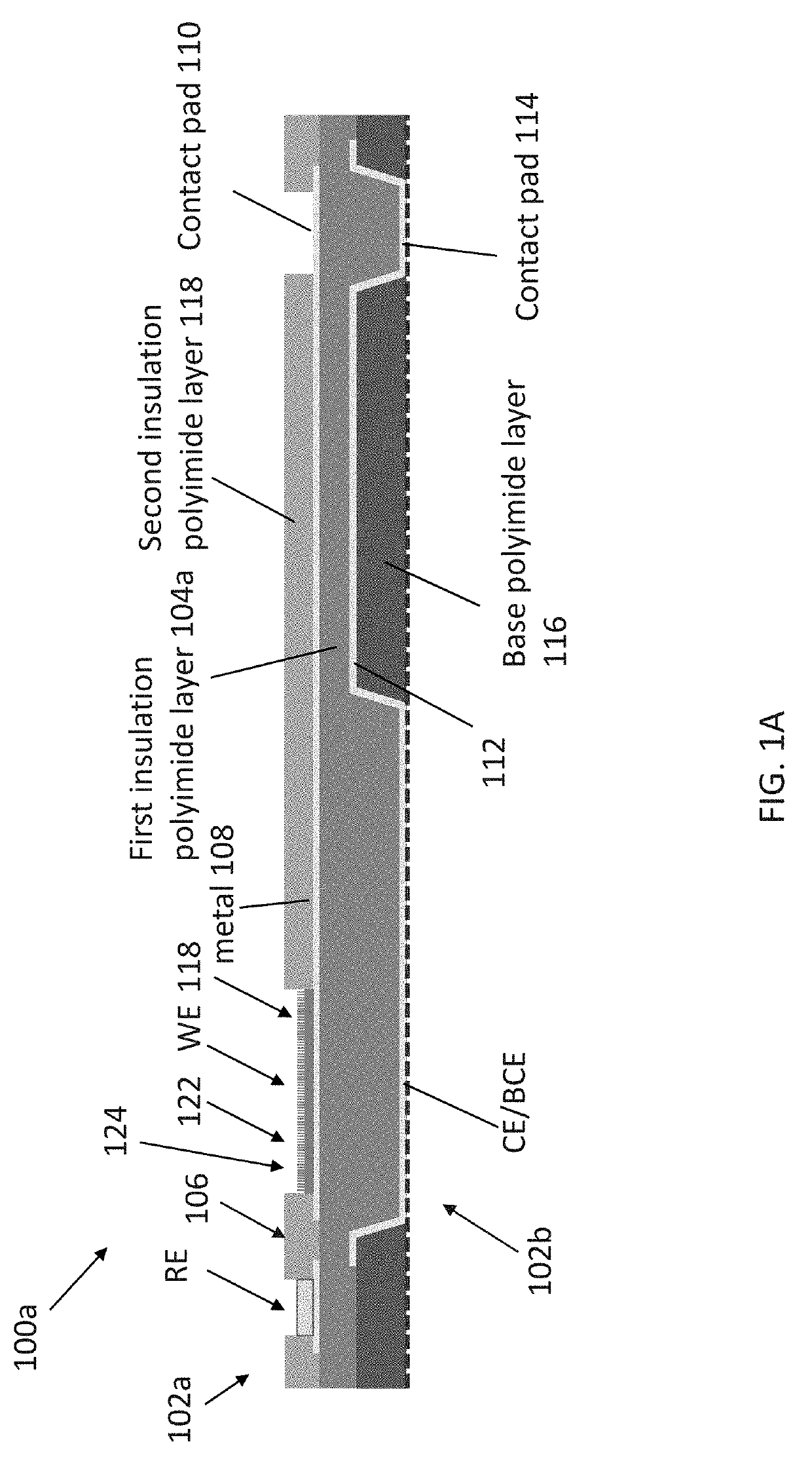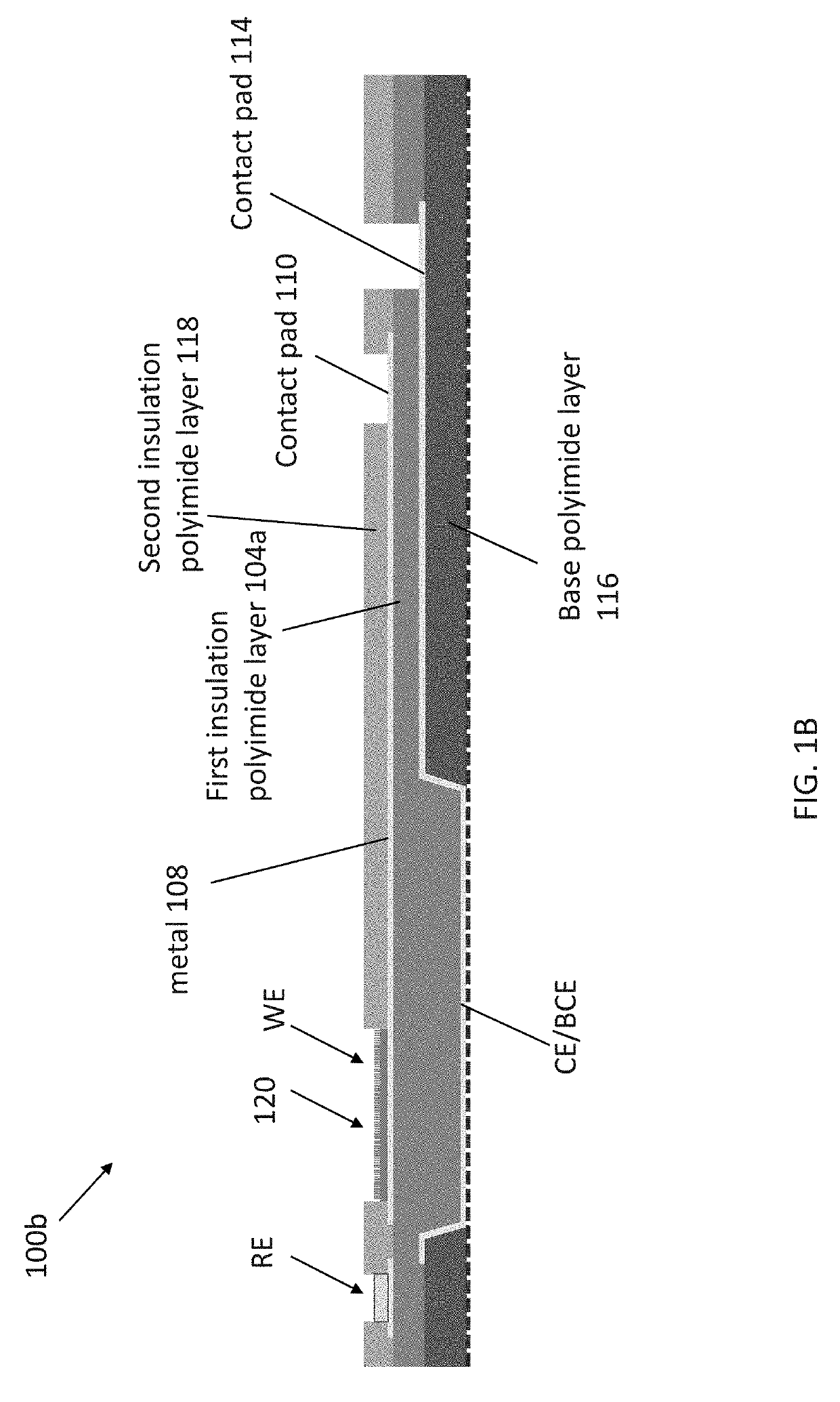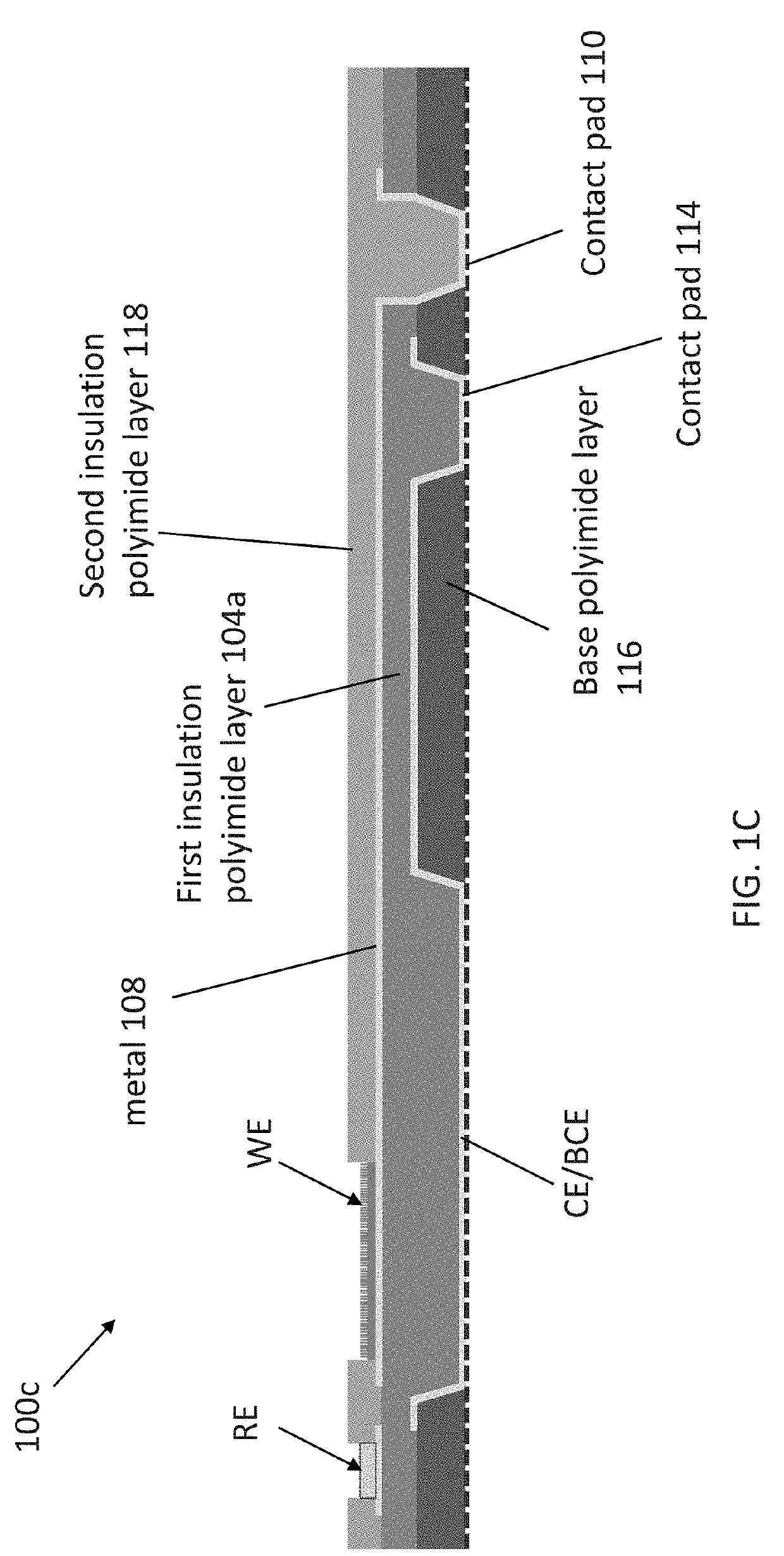Methods for controlling physical vapor deposition metal film adhesion to substrates and surfaces
a metal film and physical vapor deposition technology, applied in the field of methods for controlling physical vapor deposition metal film adhesion to substrates and surfaces, can solve problems such as degrading sensor performance, and achieve the effect of reducing surface area conta
- Summary
- Abstract
- Description
- Claims
- Application Information
AI Technical Summary
Benefits of technology
Problems solved by technology
Method used
Image
Examples
example 1
g Apparatus
[0118]FIG. 4 illustrates an apparatus comprising a chamber 400 for depositing material (e.g., a thin film 402) using sputtering. A sputtering gas 404 in the chamber 400 is ionized to form a plasma comprising ionized gas particles 406 (e.g., Ar+). The ionized particles 406 bombard the sputtering target 408 comprising a metal composition. Collision of the ionized particles 406 with the sputtering target 408 knocks off material 410 (e.g., sputtered target atom) comprising the metal composition and accelerates 412 the material 410 to the target surface on the substrate 414, thereby forming a film 402 on the substrate 414. The ionized gas particles 406 are accelerated towards target using electric and / or magnetic fields applied by electrodes biased with voltage U−. The particle collision is controlled by process power (i.e., power of the electric and / or magnetic fields until arrival of the ionized gas particles on the sputtering gas) and pressure and composition of the sputter...
example 2
g Conditions for Controlling Adhesion
[0119]The following deposition conditions may impact adhesion.[0120]High pressure deposition conditions may cause the deposited film to form under stress, leading to poor adhesion.[0121]Deposition power may impact adhesion since higher deposition rates may induce void pockets, leading to poor adhesion.[0122]High temperatures used during deposition may evaporate any remaining adsorbed water from the surfaces, improving adhesion.[0123]Thicker films can generate stresses and worsen the adhesion.[0124]Geometric area may also impact adhesion, and may be controlled by the formation of pillars at the interface between the film and the substrate.
[0125]In the experiments described herein, sputtering parameters including pressure, power, temperature, and thickness, and combinations of these parameters, were adjusted to determine their impact on adhesion and to determine the parameters / parameter values that achieve optimal adhesion for electrode processing....
example 3
ng Sputtering Rate
[0151]A DOE analysis was performed to determine the process parameters affecting sputtering rate of gold onto a glass substrate when no heat is applied. FIG. 16 illustrates a Pareto chart of the standardized effects of changing pressure, power, and gold thickness on sputtering rate, when no heat is applied. In the Pareto chart, response is the sputtering rate in Angstroms per second and α=0.05.
[0152]FIG. 17 is a plot of the mean of the sputtering rate as a function of pressure, power, and gold thickness.
[0153]FIG. 18 is a contour plot of the sputtering rate versus sputtering power (kW) and pressure (mTorr).
[0154]The DOE analysis (FIG. 16, FIG. 17, and FIG. 18) shows that an optimal pressure exists for a maximum sputtering rate and that sputtering rate increases linearly with sputtering power. Thus, as illustrated herein, PVD conditions can be carefully selected to increase sputtering rate and control adhesion. In one or more embodiments, the DOE analysis is used to...
PUM
| Property | Measurement | Unit |
|---|---|---|
| pressure | aaaaa | aaaaa |
| pressure | aaaaa | aaaaa |
| pressure | aaaaa | aaaaa |
Abstract
Description
Claims
Application Information
 Login to View More
Login to View More - R&D
- Intellectual Property
- Life Sciences
- Materials
- Tech Scout
- Unparalleled Data Quality
- Higher Quality Content
- 60% Fewer Hallucinations
Browse by: Latest US Patents, China's latest patents, Technical Efficacy Thesaurus, Application Domain, Technology Topic, Popular Technical Reports.
© 2025 PatSnap. All rights reserved.Legal|Privacy policy|Modern Slavery Act Transparency Statement|Sitemap|About US| Contact US: help@patsnap.com



